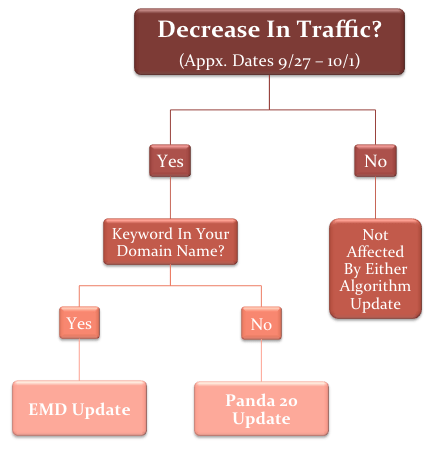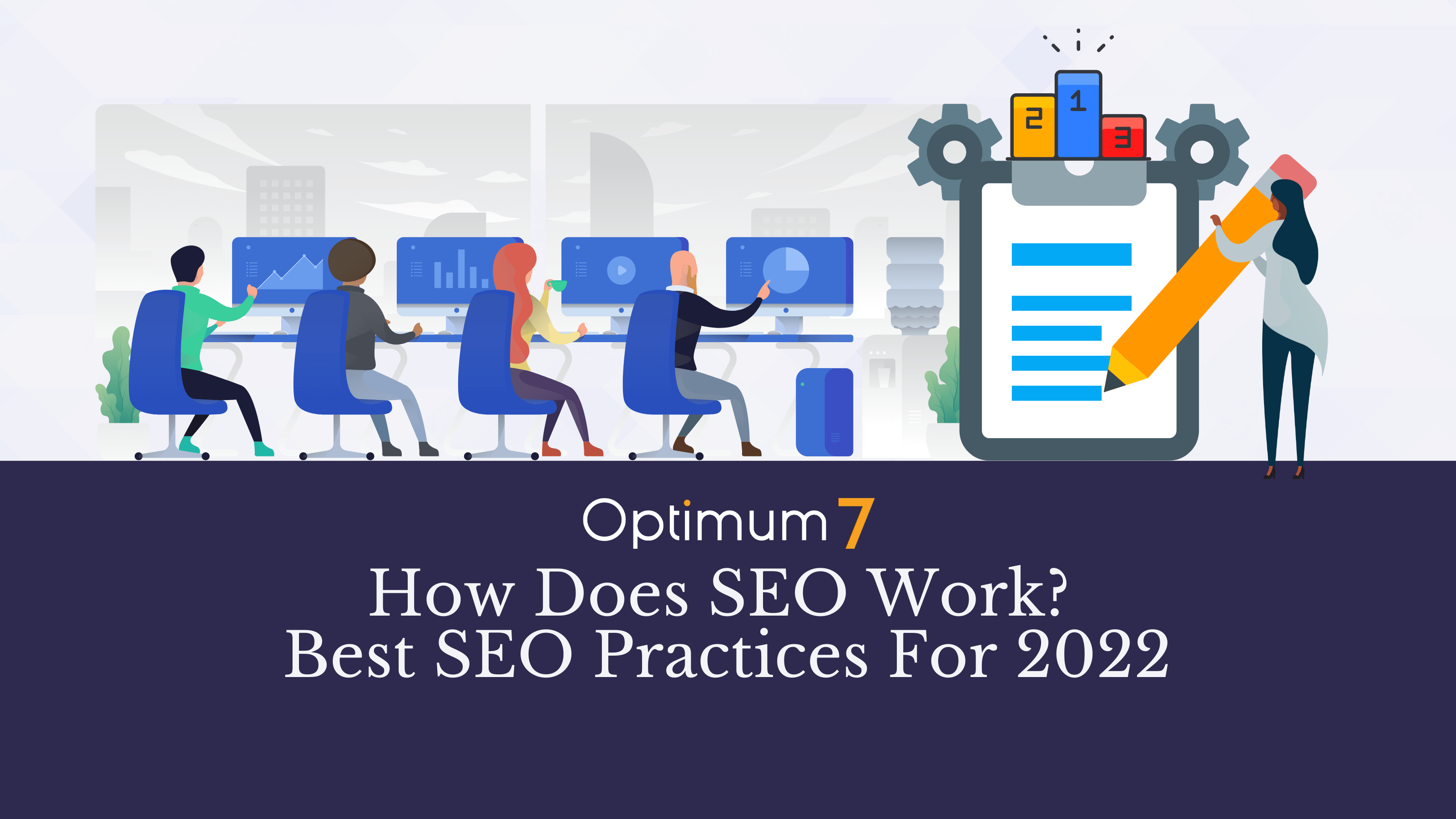 On Thursday, September 27th, Google confirmed its 20th Panda update. This update is fairly major for two reasons:
On Thursday, September 27th, Google confirmed its 20th Panda update. This update is fairly major for two reasons:
- It is not simply a data update, but an actual algorithm update. This means that both old and new sites are likely to be impacted even without making any changes.
- It impacts approximately 2.4% of English searches and 0.5% of foreign searches.
Google’s Head of the Webspam Team, Matt Cutts, released this statement confirming the update:
Google began rolling out a new update of Panda on Thursday, 9/27. This is actually a Panda algorithm update, not just a data update. A lot of the most-visible differences went live Thursday 9/27, but the full rollout is baking into our index and that process will continue for another 3-4 days or so. This update affects about 2.4% of English queries to a degree that a regular user might notice, with a smaller impact in other languages (0.5% in French and Spanish, for example).
To make life even more confusing for the masses, Google released an overlapping algorithm update, targeting exact match domains (EMDs). Figuring out which algorithm update has affected your site’s traffic can be tricky. In this article, I will explain how you can identify which algorithm has affected your site and how to regain traffic if you were hit by Panda Update 20.
Brief History of Google’s Panda Updates
If your site was hit by Panda, you may be wondering about the previous 19 Panda updates. The first Panda update began rolling out on February 24th, 2011. This update was HUGE, affecting nearly 12% of all English queries. It mainly was aimed at devaluing sites with poor content, both “scraped” content and just crappy content in general. The sites that were hit the hardest were “content farms” and “scraper sites”. Content farms are sites filled with shallow or low-quality content. Scrapers are sites that contain content copied directly from other sites.
After the first Panda update, there were a number of updates to Panda which have affected sites all over the world. While most are simply data updates and only affect about 1% of English search queries, there have been a few major updates, namely Panda Update 6 (6-9% of English searches affected) and Panda Update 8 [link] (2% of English searches affected).
Panda Update 20 or EMD Update?
Nothing is ever easy. Even when you find yourself royally screwed over by a Google algorithm update, it’s difficult if not impossible to figure out which algorithm update affected your site! It’s important to know WHAT you were affected by in order to narrow down the reasons WHY you were affected and find out HOW to fix it.
Follow this handy diagram to figure out if your site was hit by the Panda 20 Update or by the EMD Update:
EMD Update:
If your site was hit by the EMD Update, it is probable that you have a keyword in your domain name. If your site was hit with the EMD Update, you most likely lost rankings for that specific keyword. For example, if your domain name is SmithSailingClub.com, you probably lost rankings for “sailing” and “sailing club”.
Panda 20 Update:
By narrowing down your options for traffic loss through different variables, you should be able to tell if you were hit by Google’s Panda 20 Update. Does your site have low quality or even worse, duplicate content? Yes? If you lost significant traffic to your site sometime between September 27, 2012 and October 1, 2012 and your domain name does NOT contain a keyword, you were most likely affected by the Panda 20 Update. Are you panicking yet? Keep reading… I know this is all a bit overwhelming. Losing organic traffic means that your business will suffer. But, being a stressed and overwhelmed website owner or business owner is never a good thing for anyone involved. That is why I have put together a list of 14 ways to recover traffic after being hit by the Google Penguin 20 Update.
1. Fix all Crawl Errors as well as HTML Improvements reported by Google Webmaster Tools
- Crawl Errors and HTML Improvements decrease the effectiveness of search engine crawlers. If search engines cannot successfully crawl your site, they cannot report back with the most important information and data from your site.
- Crawl Errors can be found here: Log in to Webmaster Tools > Health > Crawl Errors
- 301 redirect all Crawl Errors using this excel spreadsheet: 301 Redirects Template
- Under Old URL, add the second half of the URL only (anything after .com, .net, etc.)
- Under New URL, paste the entire URL you wish to redirect the old URL to
- HTML Improvements can be found here: Log in to Webmaster Tools > Optimization > HTML Improvements
- Fix all short meta descriptions, duplicate meta descriptions, etc.
2. Write better and more detailed content
- If you were hit by Panda 20, chances are you were not producing quality content in the first place. Hopefully this is a lesson learned – you cannot cheat the system. Write great content, not just generalized, thin, non-authoritative content. Google can tell the difference now. That is the key reason for Panda in the first place; improved search technology.
- That being said, from now on you must write a lot of great content. We recommend publishing power articles that are anywhere from 1,000-1,500 words each. These articles are extremely detailed and add true value to your site. Write on topics that will help your readers and the world in general. Continually research long tail keywords that are highly relevant for you and write extensively on the subject. Be a thought leader in your niche.
3. Optimize all major category page titles and descriptions
- If you are using WordPress (hopefully, YES!), install a plugin called “All in One SEO Pack”. This plugin allows you to add meta titles and meta descriptions for every page on your site.
- Include your most important keywords in your meta titles and always use your brand name towards the end. This will help your brand build its online authority.
- Meta descriptions are what potential readers see on search engine results. Make them easy to read and write them in a relevant way that draws the reader into your site.
4. Implement a blog or articles section as a subdirectory
- If you do not yet have a blog or articles section on your site, shame on you. If you were punished by the Panda 20 update, chances are you already have a blog section (and were posting poor content). If not, immediately add a blog section as a subdirectory (i.e. www.yoursite.com/blog).
- It is critical that you add the section as a subdirectory rather than a subdomain (i.e. blog.yoursite.com). The reason for this is that your blog subdirectory will share the site authority that your homepage already has. Otherwise, it will be like starting a whole new website from scratch with zero authority. This would make ranking for terms through content a lengthy process, as you have to regain all authority.
5. Specific backlinking process for top 20 significant products/categories
- Want to get rankings back for your top keywords? Bringing back the sailing example, maybe you lost rankings for sailing, sailing club, sail boats, etc. Make a list of those top 20 or so terms and create a specific backlinking plan to bring their ranks back.
6. More emphasis and sharing on social media, as well as social bookmarking sites
- There’s no way that anyone can argue that social media isn’t a huge part of the web today. If we all know it, why hide from reality? If you haven’t already, create those social media profiles. Most importantly, Google+ (it’s owned by Google, duh), Facebook, Twitter and LinkedIn. Other sites can be appropriate in certain instances, especially YouTube or Vimeo. If you have a business that can benefit from video campaigns, you should absolutely have a YouTube and Vimeo channel that is optimized for viral video content.
- As for social bookmarking, it’s kind of a toss up at this point. Should you create profiles on important social bookmarking sites for your business? Yes. Will they be effective? Maybe. The point is, you have to do it right, and that takes time. For example, if you simply upload all of you articles one after another to StumbleUpon, your account will most likely be blocked. Same with Digg, Reddit, Delicious, etc. The best way to go about social bookmarking without being blocked is to upload your best content periodically, and also upload other relevant content. I’ve heard that actually “stumbling” for a few minutes here and there will help your profile not get blocked. If you had a little extra time here and there to social bookmark the right way, I would definitely do it.
7. Implement appropriate 301 redirects, fix all 404 errors
- 404 errors, or “not found” errors are client-side errors, meaning that the client most likely caused the error. If a reader was on your site and arrived at a 404 error page, there is a good chance that they will exit your site. To prevent this from happening, it’s important to 301 redirect every 404 error page on your site. This was discussed briefly in step 1 above. You must redirect these pages to their most relevant page on the site. For instance, if the page is about different types of sailboats and you have a subdirectory on your site called, “/types-of-sailboats,” I would redirect that page here.
- To redirect these specific pages, you can use the same spreadsheet that I provided above under step number 1. Follow the same directions outlined there.
8. All pages like printable versions or sorting pages should be assigned “canonical” links
- There are a few basics to SEO that every webmaster should know. One of these basic rules is to not have duplicate content. But the problem is that sometimes you will have duplicate content on your site and not even know it! The most common way for this to happen is with printable versions of pages or sorting pages such as category and tag pages.
- The way to fix this problem is to place canonical links on your duplicate pages pointing back to the original versions of the content.
9. Implement mobile version of the whole site and sitemap. Linking back and forth with “meta keywords, meta descriptions, and page content”
- Last year, a staggering 50% of local searches were conducted on a mobile phone. Trust me; having a mobile site is a must for any business, no matter how small. Yes, you can pay a designer a good chunk of cash to design an awesome mobile site. And yes, it will be pretty amazing. But if you are short on cash or you are just a local small business and don’t feel the need to get so fancy, consider using the WordPress plugin called WPTouch (that is, if your site is on WordPress). It’s free and easy to use and makes a perfectly good mobile site. You literally need zero coding knowledge to create a mobile website with this plugin. Highly recommended.
10. Refresh homepage content everyday with new customer testimonials, best sellers, recent articles etc.
- Homepage content is one of the key ways that search engine crawlers find info on your site. Having fresh content will get your site re-indexed often and will make it easy for crawlers to find great information and keywords that you are looking to rank for. Posting customer reviews or best selling items is a great way to keep your homepage content fresh.
11. Discontinue and remove all link exchanges
- If you engaged in link exchanges in the past, it is critical that you remove them. Contact the site owners that you did this with and have them remove your links. Also, remove their links from your site, if applicable. It is important to only have a natural looking backlink profile.
12. Remove all “shady” backlinks from network sites or sites within the same server
- If you paid a company in India a small chunk of dough to create thousands of backlinks for you a few years back, I feel sorry for you. But regardless, measures must be taken to get these links removed. Contact the company that you worked with and see if they will remove them. You may even have to pay them to undo the work that you originally paid them for. But once your backlink profile is clean, it will make a huge difference in your SEO.
13. Creation of shopping guides. (/guides)
- A good way to get easy and helpful content on an eCommerce site is by adding a subdirectory for shopping guides. Post your most popular products, helpful product reviews, complimentary products… you get the point. Anything that will assist your reader is good stuff in Google’s eyes.
14. Analyze ALL backlinks with “exact” anchor text
- Check your backlink profile in Open Site Explorer (it’s free for up to 3 reports per day). Click on the “anchor text” tab and check out your backlinks’ most used anchor texts. A good rule of thumb for backlinks is that the first 5 you have listed should be variations of your brand term. If your first anchor text listed (i.e. the one with the most links) is “sailboats” and you are the (imaginary) sailboat company we used in the previous couple examples, you are in trouble. Exact anchor texts will hurt your rankings because this is considered over-optimization, not naturally occurring optimization. Try to change those anchor texts to your brand name. If you are unable to change them, start today adding natural, legitimate backlinks with your brand name as the anchor texts. This will at least improve your overall link profile which is ultimately what you need to accomplish.
For those of you who were hit by the Panda 20 Update, try not to panic. There is only one way out of the hole, and that is to start climbing. By following these 14 tips, you should be able to slowly regain your precious rankings and begin to recover your traffic. However, the keyword here is slowly. There is no quick fix. Unfortunately for those negatively affected, that is the exact point that Google is trying to prove with algorithm updates like these. If you try quick fixes and black-hat SEO methods to cheat the system, you will be punished. It’s the hard cold truth. In the future, use natural and white-hat methods only … Real Marketing!
If your site was hit by the Panda 20 Update and you feel that your business is in jeopardy, do not hesitate to contact us. We offer free consultation to discuss your recovery options for the Panda 20 update.






